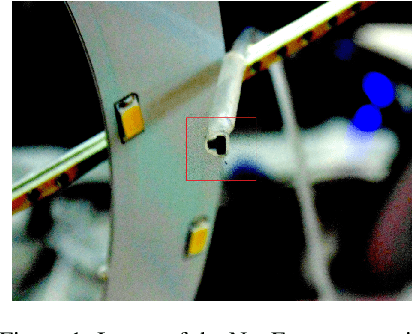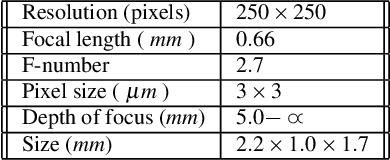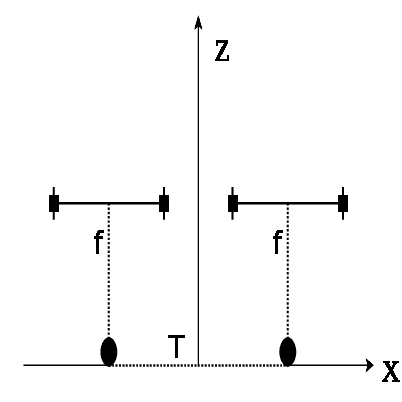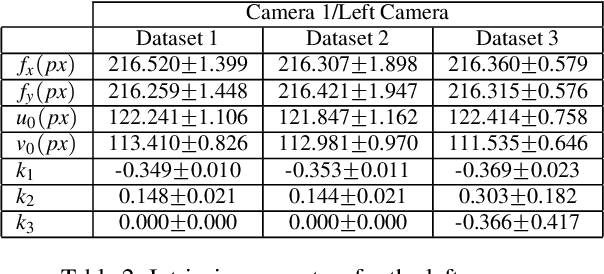3D Reconstruction with Low Resolution, Small Baseline and High Radial Distortion Stereo Images
Paper and Code
Sep 19, 2017



In this paper we analyze and compare approaches for 3D reconstruction from low-resolution (250x250), high radial distortion stereo images, which are acquired with small baseline (approximately 1mm). These images are acquired with the system NanEye Stereo manufactured by CMOSIS/AWAIBA. These stereo cameras have also small apertures, which means that high levels of illumination are required. The goal was to develop an approach yielding accurate reconstructions, with a low computational cost, i.e., avoiding non-linear numerical optimization algorithms. In particular we focused on the analysis and comparison of radial distortion models. To perform the analysis and comparison, we defined a baseline method based on available software and methods, such as the Bouguet toolbox [2] or the Computer Vision Toolbox from Matlab. The approaches tested were based on the use of the polynomial model of radial distortion, and on the application of the division model. The issue of the center of distortion was also addressed within the framework of the application of the division model. We concluded that the division model with a single radial distortion parameter has limitations.
 Add to Chrome
Add to Chrome Add to Firefox
Add to Firefox Add to Edge
Add to Edge